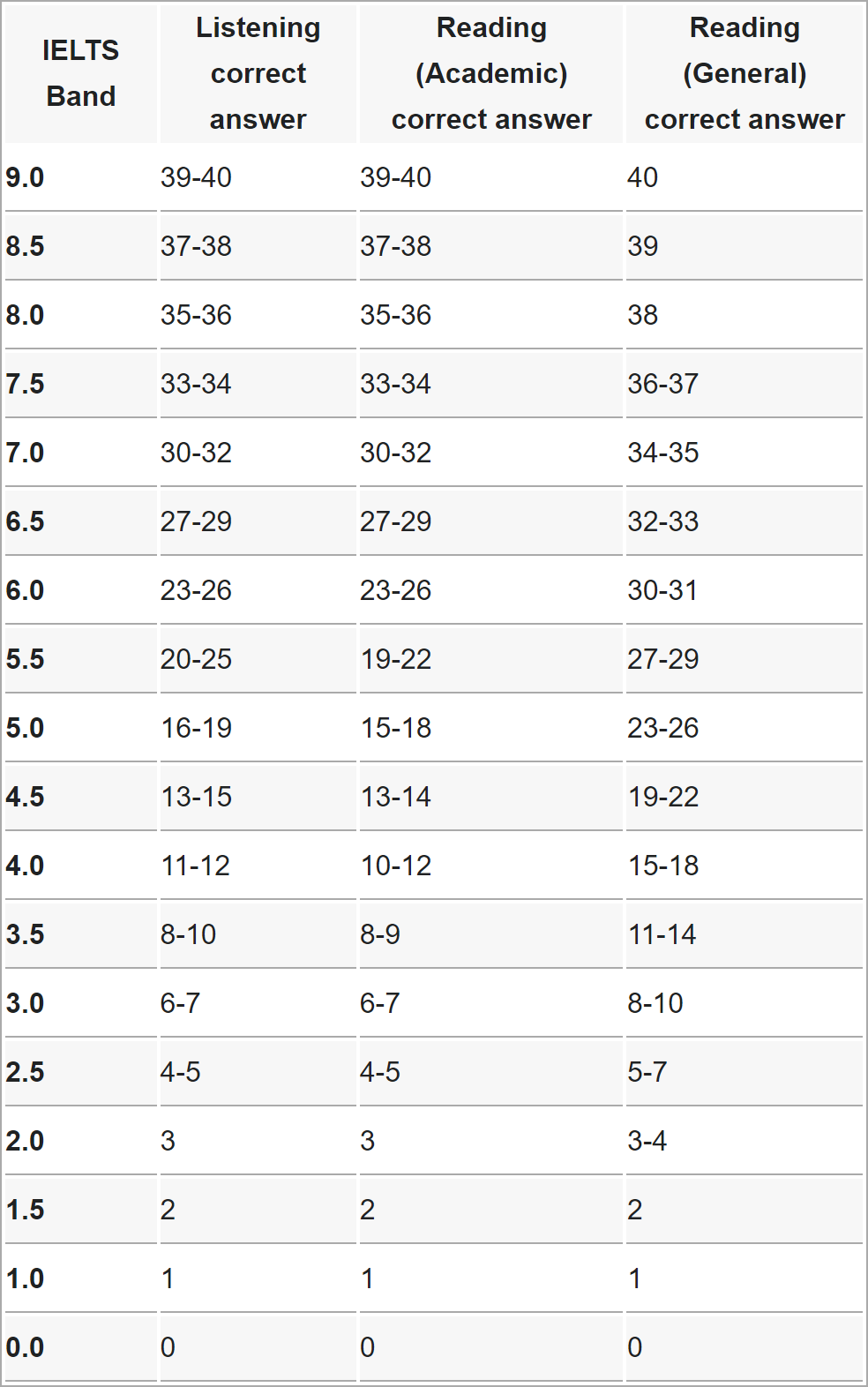Are you preparing to take the IELTS exam but feeling overwhelmed by the scoring system? Understanding the IELTS score range chart is essential for interpreting your results and knowing where you stand in terms of English proficiency. This chart breaks down the scores for each section of the exam and provides a clear picture of your strengths and areas for improvement.
Before diving into the details of the score range chart, it’s important to know that the IELTS exam consists of four sections: Reading, Writing, Listening, and Speaking. Each section is scored on a scale of 0 to 9, with 9 being the highest score. Your overall band score is the average of these four section scores, rounded to the nearest half band.
IELTS Score Range Chart
Here is a breakdown of the IELTS score range chart:
| Band Score | Proficiency Level |
|---|---|
| 9 | Expert |
| 8 | Very good |
| 7 | Good |
| 6 | Competent |
| 5 | Modest |
| 4 | Limited |
| 3 | Extremely limited |
| 2 | Intermittent |
| 1 | Non-user |
| 0 | Did not attempt the test |
It’s important to note that each band score corresponds to a specific level of English proficiency, ranging from non-user to expert. Your band score will determine your eligibility for academic or professional purposes, so it’s crucial to aim for the highest possible score.
When you receive your IELTS results, refer to the score range chart to understand your strengths and weaknesses in each section. This will help you identify areas for improvement and tailor your study plan accordingly. With dedication and practice, you can improve your English skills and achieve your desired band score.
In conclusion, the IELTS score range chart is a valuable tool for interpreting your exam results and setting goals for improvement. By understanding the scoring system and knowing where you stand in terms of English proficiency, you can work towards achieving your desired band score. Use the chart as a guide to track your progress and stay motivated on your journey to success.
